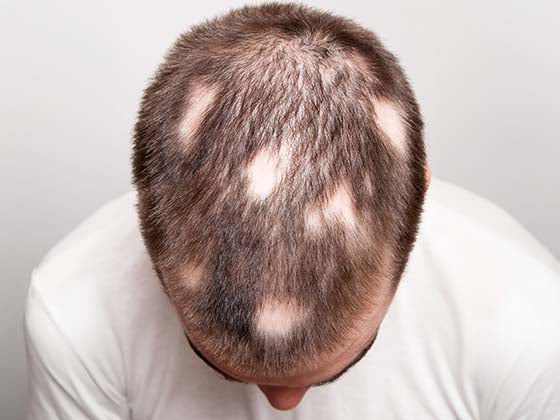To eliminate bromodosis, or smelly feet, a combination of good hygiene and specific therapies is required. This blog is the finest resource for getting rid of smelly feet.
Understanding Bromodosis: The Science Behind Smelly Feet

Bromodosis, often known as smelly feet, is a disorder in which an unpleasant odour emanates from the feet. Sweat, bacteria, moisture, warmth, infections, hyperhidrosis, and poor foot hygiene are among factors that contribute to odorous feet.
Bacteria, Sweat, and Odor: A Troublesome Trio
Indeed, bacteria, sweat, and odour are a troublesome trio when it comes to foot health. Here's how they interact to cause smelly feet:
-
Bacteria: The skin naturally supports a diverse community of bacteria, including those found on the feet. When sweat accumulates on the skin's surface, bacteria thrive, especially in warm, moist environments such as the inside of shoes. Certain bacteria, including Staphylococcus epidermidis and Corynebacterium species, metabolise sweat components, converting them into volatile compounds that contribute to foot odor.
-
Sweat: The feet have a high concentration of sweat glands, which produce sweat to regulate temperature and stay hydrated. However, when sweat accumulates in socks and shoes, it creates a moist environment that encourages bacterial growth. Sweat has no odour, but when bacteria metabolise its components, such as amino acids and fatty acids, they emit unpleasant odors.
-
Odour: The interaction of bacteria and sweat produces volatile organic compounds (VOCs), such as short-chain fatty acids and sulphur compounds, which emit a foul odor. These compounds produce the characteristic odor associated with smelly feet, which is often described as cheesy, vinegary, or pungent.
This troublesome trio is especially problematic in situations where feet are enclosed in tight-fitting or poorly ventilated shoes for long periods, such as during exercise, work, or hot weather. Sweating increases in such environments, providing plenty of moisture for bacteria to thrive and produce odor-causing compounds. To treat smelly feet, you must address all three components of the problem: bacteria, sweat, and odor. Practice good foot hygiene, wear moisture-wicking socks and breathable shoes, use foot powders or antiperspirants, and address underlying conditions like fungal infections or hyperhidrosis. Individuals can effectively combat foot odour while also maintaining foot health and comfort by addressing each of the three components.
The Role of Hygiene and Lifestyle in Preventing Foot Odor
Hygiene and lifestyle habits are important in preventing foot odour because they reduce bacterial growth, and sweat accumulation, and help to keep the feet clean and healthy. Here's how you can use good hygiene practices and lifestyle changes to keep foot odor at bay:
-
Every day, thoroughly clean your feet with soap and water, especially if you have sweated or been wearing closed shoes for a long time. Pay close attention to the spaces between your toes and beneath your nails, where bacteria and fungi can thrive.
-
After washing your feet, dry them thoroughly, including between the toes. Moisture creates an ideal environment for bacteria to multiply, so keeping your feet dry is critical for avoiding odor.
-
Apply antiperspirant or foot powder to your feet before putting on socks and shoes. These products help to absorb moisture and reduce sweat production, thereby reducing the conditions that promote bacterial growth and foot odor.
-
Choose breathable shoes, such as leather or mesh, to promote air circulation and keep your feet cool and dry. Avoid wearing tight-fitting or non-breathable shoes for long periods, as they can trap moisture and promote bacteria growth.
-
Alternate between pairs of shoes to allow each to fully air out and dry between wears. This helps to prevent the buildup of moisture and odor-causing bacteria inside the shoes.
-
Choose socks made of moisture-wicking materials, such as wool or synthetic blends, to keep your feet dry. Cotton socks should be avoided because they retain moisture and can exacerbate foot odours.
-
Keep your toenails trimmed and clean to avoid the accumulation of bacteria and fungi under the nails, which can lead to foot odour and infection.
-
When walking in public areas like gym locker rooms, swimming pools, or communal showers, wear flip-flops or shower shoes to reduce the risk of picking up bacteria or fungi that can cause foot infections and odor.
-
Eating a well-balanced diet, staying hydrated, and managing stress can all help improve foot health and reduce the likelihood of odor.
By incorporating these hygiene practices and lifestyle changes into your daily routine, you can effectively prevent foot odour while also maintaining fresh, comfortable feet.
When Foot Odor Signals a Deeper Issue: Medical Causes of Bromodosis
While foot odour is usually caused by bacteria and sweat, it can also be a sign of an underlying medical condition. Bromodosis (foot odour) has several medical causes, including:
-
Fungal Infections: Fungal infections, such as athlete's foot (tinea pedis), can cause chronic foot odor. These infections thrive in warm, moist environments and can cause symptoms such as itching, redness, and foul odor. Antifungal medications, such as creams, powders, or oral medications, are commonly used to treat the infection and reduce odor.
-
Hyperhidrosis: Sweating excessively more than is required to regulate body temperature is the hallmark of hyperhidrosis. People with hyperhidrosis may experience excessive sweating on their feet, resulting in moisture buildup and increased foot odor. Prescription antiperspirants, iontophoresis (a procedure that uses electrical currents to reduce sweating), and, in severe cases, botulinum toxin injections or surgical procedures to block sweat glands are all viable treatment options.
-
Bacterial Infections: Bacterial infections of the feet, such as cellulitis or erysipelas, can cause a foul odor as well as other symptoms such as redness, swelling, heat, and pain. These infections usually necessitate antibiotic treatment prescribed by a healthcare professional to clear the infection and reduce odour.
-
Systemic Conditions: Diabetes, peripheral vascular disease, and immune system disorders can all impair circulation and predispose people to foot infections and odors. To avoid complications, it is critical to properly manage these underlying conditions, as well as practise regular foot care and hygiene.
-
Hormonal Changes: Hormonal changes, such as those that occur during puberty, pregnancy, or menopause, can cause excessive sweating and foot odour. While temporary, managing hormonal changes through lifestyle adjustments or medical interventions may help alleviate foot odor.
-
Medications: Some drugs, especially those that increase sweating or alter sweat composition, might cause foot odour as a side effect. If foot odour occurs after taking a new drug, speak with a healthcare practitioner about possible alternatives or treatment measures.
-
Poor Circulation: Conditions that affect circulation, such as peripheral artery disease or venous insufficiency, can reduce blood flow to the feet, leading them to sweat less and deposit odor-producing germs. Managing underlying vascular problems can improve circulation and decrease foot odour.
If foot odor persists despite appropriate cleanliness and lifestyle practices, or if it is accompanied by other serious symptoms, it is critical to see a healthcare professional for an accurate examination and diagnosis. Identifying and treating any underlying medical reasons for bromodosis is critical for properly controlling foot odor and maintaining foot health.
Natural and Home Remedies: Gentle Solutions for Foot Odor

Natural and home remedies for foot odour can be gentle but effective, helping to neutralise odours, reduce sweating, and keep feet smelling fresh. Here are some remedies you can try:
-
Foot Soaks: In warm water, dissolve Epsom salt and soak your feet for 15-20 minutes. Epsom salt helps to reduce odour by removing toxins and impurities from the skin. In a basin, combine equal parts apple cider vinegar and water. Soak your feet for 15-20 minutes. Apple cider vinegar has antibacterial properties that can help eliminate odor-causing bacteria.
-
Baking Soda Paste: Make a paste of baking soda and water and apply it to your feet, focusing on odor-prone areas. Baking soda works as a natural deodorizer by absorbing moisture and neutralising odours.
-
Tea Tree Oil: Dilute tea tree oil with a carrier oil, such as coconut oil, and apply to your feet, focusing on the space between your toes. Tea tree oil is antimicrobial, which means it can help kill bacteria that cause odours.
-
Cornflour or Talcum Powder: Use cornflour or talcum powder to absorb moisture and reduce odour in your shoes and feet. These powders also help keep your feet dry and comfortable all day.
-
Lemon Soak: Combine lemon juice and warm water, then soak your feet for 10-15 minutes. Lemon juice has natural antibacterial properties and a refreshing scent that can help with foot odour.
-
Activated Charcoal Inserts: Use activated charcoal inserts or sachets to absorb moisture and neutralise odours in your shoes. Activated charcoal is extremely porous and can effectively trap odor-causing molecules.
-
Replace your socks regularly: Put on fresh, moisture-wicking socks composed of wool or cotton. Replace your socks regularly, particularly if your feet perspire a lot.
-
Air Out Your Shoes: Give them time to thoroughly dry and air out in between wearings. Rotate between different pairs of shoes to give each pair time to air out and reduce moisture buildup.
-
Proper Foot Hygiene: Wash your feet every day with soap and water, paying special attention to the spaces between your toes. After washing your feet, thoroughly dry them before putting on socks or shoes.
-
Foot Deodorizing Sprays: Use natural foot deodorising sprays including witch hazel, aromatic oils, and herbal extracts to keep your feet and shoes fresh throughout the day.
DIY Foot Soaks: Recipes for Fresher Feet
Here are some DIY foot soak recipes made with simple ingredients to keep your feet feeling refreshed and rejuvenated:
-
Epsom Salt and Peppermint Foot Soak: Ingredients are 1/2 cup Epsom salt, 5-10 drops peppermint essential oil and Warm water. Fill a basin with warm water. Add Epsom salt and peppermint essential oil to the water. Stir the mixture to dissolve the salt. Soak your feet in the solution for 15-20 minutes. Pat your feet dry and moisturize as desired.
-
Vinegar and Tea Tree Oil Foot Soak: Ingredients are 1/2 cup apple cider vinegar, 5-10 drops tea tree essential oil and Warm water. Fill a basin with warm water. Add apple cider vinegar and tea tree essential oil to the water. Stir the mixture to combine. Soak your feet in the solution for 15-20 minutes. Rinse your feet with clean water and pat dry.
-
Baking Soda and Lemon Foot Soak: Ingredients are 1/4 cup baking soda, Juice of 1 lemon and Warm water. Fill a basin with warm water. Add baking soda and lemon juice to the water. Stir the mixture until the baking soda dissolves. Soak your feet in the solution for 15-20 minutes. Gently scrub your feet with a soft brush or washcloth. Rinse your feet with clean water and pat dry.
-
Green Tea and Lavender Foot Soak: Ingredients are 2 green tea bags, 5-10 drops lavender essential oil and Warm water. Steep the green tea bags in a basin of warm water for 10-15 minutes. Add lavender essential oil to the tea-infused water. Soak your feet in the solution for 15-20 minutes. Relax and enjoy the calming aroma of lavender while your feet soak.
The Power of Essential Oils in Combating Foot Odor
Essential oils can be effective allies in the fight against foot odor due to their antimicrobial, antifungal, and deodorising properties. Here are some essential oils known for their efficacy in combating foot odor:
-
Tea Tree Oil: The antibacterial, antifungal, and antimicrobial qualities of tea tree oil are well known. It is a great option for treating foot odour because it can help eliminate fungi and bacteria that cause odour on the skin. To prevent skin irritation, tea tree oil should be diluted with a carrier oil before being applied topically.
-
Peppermint Oil: Peppermint oil has a cooling aroma and antibacterial qualities that can help prevent bacteria that cause odours on the feet. It also has a cooling effect, which makes it especially comforting for sore, fatigued feet.
-
Lavender Oil: Lavender oil is well-known for having antibacterial and calming effects. It adds a lovely, flowery scent and can aid in the removal of bacteria and fungi from the skin. Lavender oil is suitable for most skin types and can be diluted and applied topically or used in foot soaks or massages.
-
Eucalyptus Oil: Rich in antibacterial and antifungal qualities, eucalyptus oil can help fight athlete's foot and other fungal infections. It also has a revitalising, refreshing aroma that helps stimulate the senses.
-
Lemon Oil: Lemon oil can help mask odours on the feet because of its antibacterial qualities and zesty, fresh aroma. It is a well-liked option for foot care products because it also brightens the skin.
-
Rosemary Oil: Rosemary oil can help get rid of bacteria and fungus on the feet because of its antimicrobial and antifungal qualities. It has a woody, herbal scent that can help mask foot odour while also providing a sense of stability and balance.
Dietary Adjustments to Keep Foot Odor at Bay
While proper foot hygiene and topical treatments can help combat foot odour, dietary changes can also help reduce odour from the inside out. Here are some dietary tips to prevent foot odour:
-
Stay Hydrated: Drinking enough water helps flush toxins from your body and dilutes compounds that can cause body odour, including foot odor. To stay hydrated, drink at least eight glasses of water each day.
-
Reduce Odor-Causing Foods: Some foods, including foot odor, can cause body odor. Sulfur-rich foods, such as garlic, onions, and cruciferous vegetables like broccoli and cabbage, can produce sulfur-containing compounds, which are excreted through sweat and contribute to odour. While these foods offer health benefits, reducing their consumption may help alleviate foot odor.
-
Eat More Fresh Fruits and Vegetables: A diet rich in fresh fruits and vegetables can help improve overall body odor by providing essential nutrients and antioxidants that aid in detoxification and promote a healthy balance of bacteria in the body.
-
Include Probiotic-Rich Foods: Probiotics, or beneficial bacteria, aid in gut health and can affect body odour. Incorporating probiotic-rich foods into your diet, such as yoghurt, kefir, sauerkraut, and kimchi, may help balance your gut microbiota and reduce body odour, particularly foot odor.
-
Limit alcohol and caffeine consumption: Alcohol and caffeine can cause excessive sweating and dehydration, exacerbating foot odor. Limiting your alcohol and caffeine consumption, especially before physical activity, can help reduce foot odor.
-
Maintain a Balanced Diet: Eating a variety of nutrient-dense foods can improve overall health and lower the likelihood of developing body odor, including foot odor. Aim to consume a variety of lean proteins, whole grains, healthy fats, and plenty of fruits and vegetables.
-
Consider Herbal Remedies: Some herbs and spices, such as parsley, mint, and cinnamon, are thought to have natural deodorising properties that can help reduce body and foot odor. Incorporating these herbs and spices into your meals or drinking them as teas may have additional odor-fighting properties.
Advanced Care Strategies: When to Seek Professional Help

While many cases of foot odour can be effectively managed with good hygiene, lifestyle changes, and over-the-counter remedies, there are times when seeking professional assistance is required. Here are some indicators that it is time to consult with a healthcare professional for advanced foot odour treatment strategies:
-
If foot odor persists despite proper hygiene practices, over-the-counter remedies, and lifestyle changes, it could indicate an underlying medical condition that necessitates professional evaluation and treatment.
-
If foot odor is accompanied by other troubling symptoms such as persistent itching, redness, swelling, pain, or discharge, it could indicate a fungal infection, bacterial infection, or another dermatological condition that necessitates medical treatment.
-
Recurrent fungal infections, such as athlete's foot, or bacterial infections of the feet, may necessitate prescription-strength medications or advanced treatments to effectively eliminate the infection and prevent recurrence.
-
If you experience excessive sweating (hyperhidrosis) on your feet that significantly impacts your quality of life or leads to persistent foot odor despite using antiperspirants and other remedies, consult with a healthcare professional for evaluation and management options.
-
Foot odor can sometimes be a symptom of underlying health conditions such as diabetes, peripheral vascular disease, or immune system disorders. If you have a pre-existing medical condition or suspect that your foot odor may be related to an underlying health issue, it's essential to seek medical advice for appropriate evaluation and management.
-
A healthcare professional, such as a dermatologist or podiatrist, can provide a comprehensive evaluation and diagnosis of foot odor, ruling out any underlying medical conditions and determining the most appropriate treatment plan based on your individual needs.
-
In some cases, prescription-strength medications, topical treatments, or procedures may be necessary to effectively manage foot odor and underlying conditions. A healthcare professional can prescribe or recommend advanced treatment options tailored to your specific situation.
The Latest in Podiatric Treatments for Bromodosis
Bromodosis podiatric treatments have advanced to include enhanced antiperspirants, topical antibacterials and antifungals, botulinum toxin injections, iontophoresis, laser therapy, and microbiome studies. It is important to highlight that, while some treatments show potential, they may not be widely available or acceptable for every individual. Podiatric treatment for bromodosis should be personalised to the individual's specific requirements, taking into account aspects such as the underlying reasons for foot odour, medical history, and treatment preferences. If you have persistent foot odour, see a podiatrist or healthcare expert for a personalised evaluation and treatment options.
Innovations in Footwear and Insoles for Odor Prevention
Innovations in footwear and insoles have focused on moisture control, ventilation, and odour prevention to keep feet fresh and comfortable. Here are some recent developments in this field:
-
Moisture-Wicking Materials: Many modern footwear designs include moisture-wicking materials that draw moisture away from the skin and promote evaporation, thereby keeping feet dry and reducing conditions that promote bacterial growth and foot odor.
-
Breathable Fabrics and Mesh Panels: Shoes with these features promote better air circulation around the feet, which helps to ventilate the shoe and lessen moisture accumulation inside. Those who are athletes or lead active lifestyles may find this especially helpful.
-
Antimicrobial Treatments: Some footwear manufacturers use antimicrobial treatments on their products to prevent the growth of odor-causing bacteria and fungi. These treatments help to keep shoes fresher for longer and lower the risk of foot odour and infection.
-
Activated Carbon Insoles: These insoles contain activated charcoal, which has natural odor-absorbing properties. These insoles help absorb moisture and neutralise odours, keeping your feet feeling fresh and comfortable all day.
-
Silver-Ion Technology: Insoles and shoe liners infused with silver-ion technology emit silver ions, which have antimicrobial properties and prevent the growth of odor-causing bacteria. This technology inhibits bacterial growth and reduces foot odor.
-
Customisable Insoles: Advances in 3D scanning and printing technology have made it possible to create insoles that are tailored to a specific individual's foot shape and gait. These insoles offer personalised support and comfort while also promoting airflow and reducing moisture buildup.
-
Ventilation Channels and Perforations: Some shoe designs incorporate ventilation channels or perforations into the outsole or upper materials to improve airflow and breathability. These features help to remove moisture and heat from the shoes, lowering the likelihood of foot odour.
-
Natural and Sustainable Materials: Bamboo, cork, and hemp are examples of natural and sustainable materials that are increasingly being used in footwear construction. These materials frequently have inherent antimicrobial properties, which may help reduce foot odour without the use of chemical treatments.
Surgical Options and When They're Needed
Surgical options for foot odour are typically considered a last resort when conservative measures have failed to alleviate the problem and foot odour is associated with an underlying condition that necessitates surgical intervention. While surgery for foot odour is relatively rare, it may be considered in the following scenarios:
-
Surgical removal of sweat glands may be considered in severe cases of hyperhidrosis (excessive sweating) that have not responded to other treatments. This procedure, also known as sweat gland excision or sympathectomy, involves cutting or destroying the nerves that stimulate sweat production in the affected area. While effective at reducing sweating, this procedure is usually reserved for severe cases due to the risk of side effects and complications.
-
Botulinum toxin injections, also known as Botox injections, can be used to temporarily block the nerve signals that cause sweat production in the feet. Botox injections, while not technically a surgical procedure, are considered a medical intervention and can be administered by a healthcare professional in a clinical setting. Botox injections are temporary and must be repeated every few months to remain effective.
-
Laser sweat ablation (LSA) is a minimally invasive surgical procedure that uses laser energy to eliminate sweat glands in the affected area. LSA is primarily used to treat axillary (underarm) hyperhidrosis, but it may also be used for plantar (foot) hyperhidrosis in some cases. LSA, like other surgical options, has risks and potential side effects, and it is usually reserved for severe cases that do not respond to other treatments.
-
In some cases, foot odour can be linked to structural abnormalities or foot deformities that cause excessive sweating or bacterial overgrowth. Surgical correction of these abnormalities, such as hammertoes, bunions, or flat feet, may help to reduce foot odour by increasing airflow, reducing friction, and encouraging better hygiene practices.
It is important to note that surgical options for foot odour are typically considered only after conservative treatments have been exhausted and foot odour has a significant impact on the individual's quality of life. Surgical interventions involve risks and potential complications, so the decision to undergo surgery should be made in consultation with a qualified healthcare professional who can assess the individual's specific needs and circumstances. Furthermore, surgery may not be effective for all cases of foot odour, especially those that are not caused by underlying medical conditions.
Integrating Foot Care into Your Daily Routine: A Guide to Maintaining Fresh Feet

Integrating foot care into your daily routine is critical for keeping your feet fresh and healthy while also reducing foot odour and other frequent concerns. Here's a step-by-step approach to creating a full foot care regimen that includes daily washing, drying, moisturising, nail trimming, footwear selection, socks, foot powder, foot soaks, foot massage, and regular checkups. By adopting these foot care methods into your daily routine, you may keep your feet fresh and healthy while lowering your risk of foot odour, infections, and other common foot issues. Consistency is crucial, so prioritise foot care and reap the advantages of healthy, pleasant feet!
















